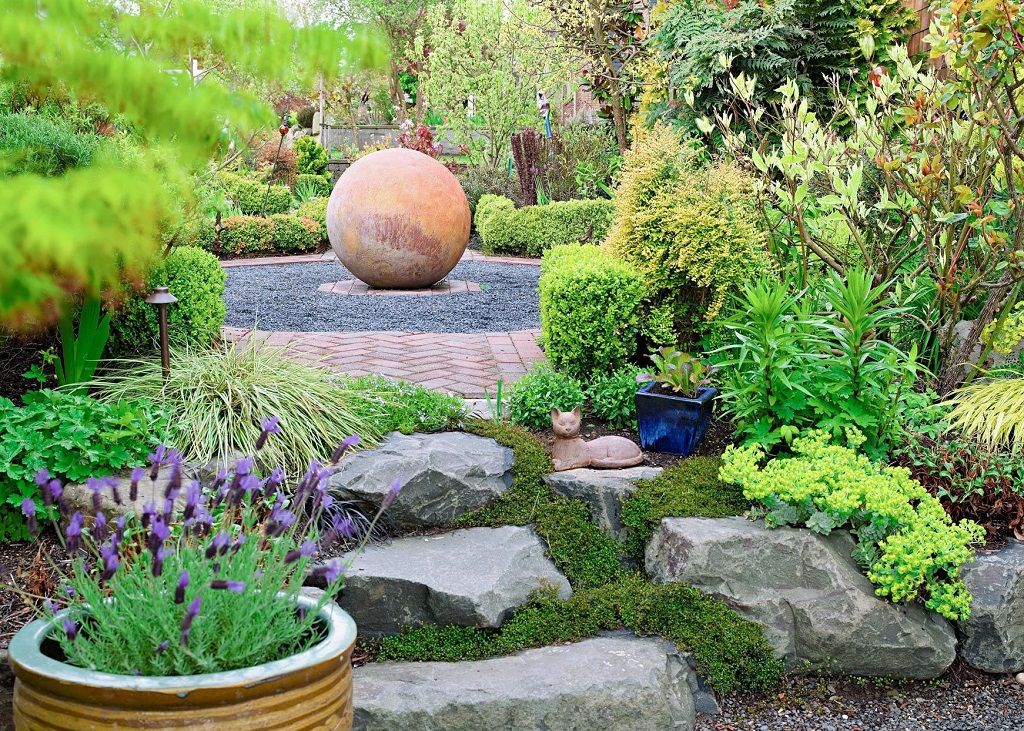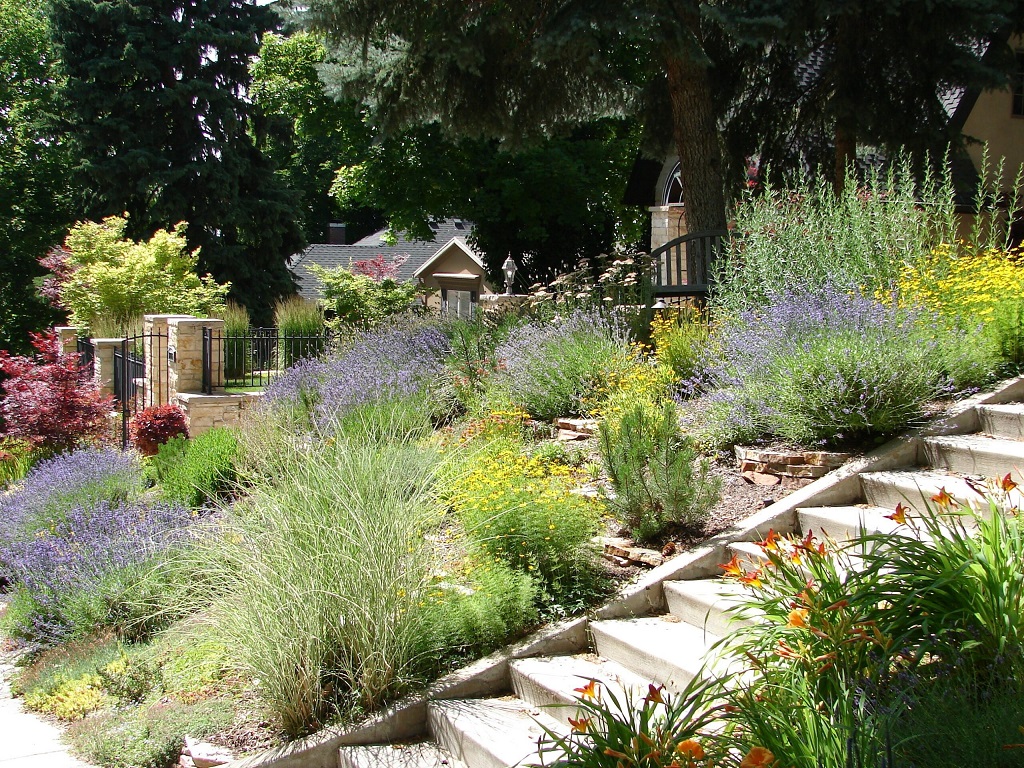
Xeriscaping, derived from the Greek word “xeros” meaning “dry,” is a landscaping method that prioritizes water conservation, especially in arid and semi-arid regions. It focuses on creating attractive and sustainable landscapes that thrive with minimal irrigation. By embracing native plants, efficient irrigation techniques, and thoughtful design, xeriscaping not only conserves precious water resources but also reduces maintenance costs and enhances the overall ecological health of your yard.
Key Principles of Xeriscaping:
-
Planning and Design:
- Soil Analysis: Understanding your soil’s composition is crucial. Amend it with organic matter to improve water retention and drainage.
- Site Analysis: Evaluate your property’s microclimates, such as sun exposure, wind patterns, and drainage. This information will guide plant selection and placement.
- Water Features: Incorporate water features like ponds or streams thoughtfully. Ensure they are designed to minimize water loss through evaporation.
-
Plant Selection:
- Native and Drought-Tolerant Plants: Prioritize plants adapted to your specific climate and soil conditions. These plants require less water and are more likely to thrive with minimal intervention.
- Variety: Include a diverse range of plants with varying textures, colors, and bloom times to create visual interest throughout the year.
- Group Plants: Group plants with similar water needs together to simplify irrigation.
-
Hydrozoning:
- Divide your landscape: Divide your yard into zones based on water requirements. This allows you to tailor irrigation schedules to the specific needs of each plant group.
- Efficient Irrigation: Utilize efficient irrigation methods such as drip irrigation or soaker hoses to deliver water directly to plant roots, minimizing water loss through evaporation and runoff.
-
Mulching:
- Apply a thick layer of mulch: Mulch helps to conserve soil moisture, suppress weeds, and regulate soil temperature. Organic mulches, such as wood chips or shredded bark, also improve soil health over time.
-
Proper Maintenance:
- Water deeply and infrequently: Encourage deep root growth by watering less frequently but more deeply.
- Monitor for pests and diseases: Address any issues promptly to minimize stress on plants.
- Prune selectively: Prune to maintain plant health and shape, but avoid excessive pruning that can stress the plant.
Read More Also: The Connection Between Fruit Trees and Mental Well-Being
Benefits of Xeriscaping:
- Water Conservation: Xeriscaping significantly reduces water usage, which is crucial in areas with limited water resources.
- Reduced Maintenance: Many native and drought-tolerant plants require less maintenance than traditional lawns, saving you time and money.
- Increased Biodiversity: By incorporating native plants, xeriscaping supports local ecosystems and attracts beneficial pollinators.
- Improved Soil Health: Organic mulches and proper irrigation practices improve soil structure and fertility over time.
- Enhanced Aesthetics: Xeriscaping can create beautiful and unique landscapes that are both visually appealing and environmentally friendly.
Frequently Asked Questions (FAQs):
- Will my xeriscape look desert-like?
- Not necessarily! Xeriscaping can incorporate a wide variety of plants, including colorful flowers, ornamental grasses, and even small trees. The key is to choose plants that are well-suited to your climate and require minimal irrigation.
- Can I still have a lawn with xeriscaping?
- Yes, but consider alternatives like drought-tolerant grasses or replacing portions of your lawn with drought-tolerant groundcovers.
- Does xeriscaping require a lot of upfront investment?
- The initial investment may be slightly higher than traditional landscaping, but the long-term savings on water and maintenance costs will outweigh the initial expense.
- Can I xeriscape in any climate?
- While xeriscaping is particularly beneficial in dry climates, the principles can be adapted to any region. Even in areas with abundant rainfall, water conservation is important.
Conclusion:
Xeriscaping offers a sustainable and environmentally responsible approach to landscaping. By embracing native plants, efficient irrigation practices, and thoughtful design, homeowners can create beautiful and water-wise landscapes that thrive with minimal intervention. Xeriscaping not only conserves precious water resources but also enhances the overall ecological health of your yard while reducing your environmental impact.

